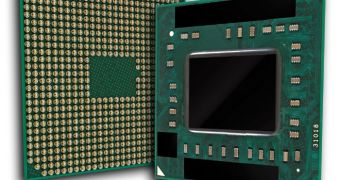We've been pretty excited about the prospects of AMD launching its next desktop accelerated processing units a month from now, but reports say this won't actually happen.
Advanced Micro Devices was supposed to release a new batch of Trinity desktop accelerated processing units in August 2012.
Unfortunately, assuming Digitimes knows what it is talking about, the likelihood is higher for the launch to be delayed by another two months.
We admit, this isn't the first time someone says the units have been pushed back to the fourth quarter. Hints towards this have existed since June, and even earlier.
We still hoped the rumors would be invalidated though, especially since manufacturing issues have long since lost their credibility as causes for Trinity delays.
Nevertheless, the Digitimes report mentioned both production and design issues as well as the level of Llano APU inventories (they are supposedly too high, even now).
Whichever the cause, the move is very disruptive, not just to consumers eager to see more Fusion but also to motherboard makers.
Sure, AMD may continue with the AM3 and AM3+ sockets, but whatever changes it makes to the platform will require product revisions on the part of mainboard makers as well
After all, the new wave of motherboards is scheduled for the second half of the year, and though some may hang back until November or December, most still hope to go forward with the October launch roadmap.
The AMD products that are still on track for a third quarter release are the FX-8350, FX-6300 and FX-4320 CPUs. All of them fit the AM3+ pin layout and hover around the 125W TDP (thermal design power).
Advanced Micro Devices did not comment on the Llano inventory theory, or any other really, but this fits with regular company policies to not speak about unannounced products. By our guess, the corporation seeks to build up a strong supply before assaulting the consumer base right as Microsoft brings out Windows 8. It could make up for the weak showing in the second quarter.

 14 DAY TRIAL //
14 DAY TRIAL //